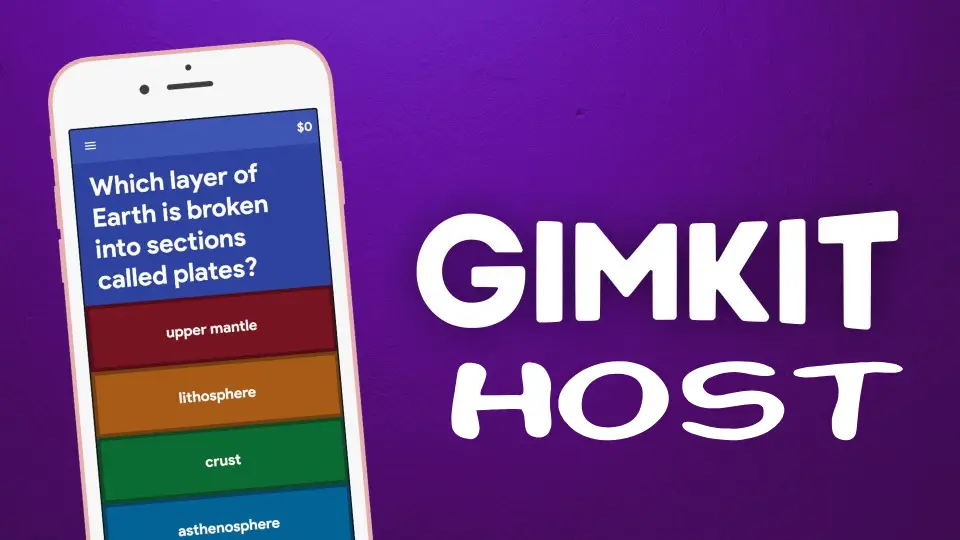Gimkit Host: Live and Join Your Own Game
Gimkit Host: Learn how to successfully host a Gimkit game in 2024 with this complete guide. From step-by-step instructions to best practices and pro tips, master orchestrating a thrilling Gimkit experience!

How To Host A Gimkit 2024?
The “Gimkit Host” describes the person who starts and oversees a Gimkit game. Gimkit is an interactive educational gaming platform available on the web that aims to make learning fun and interesting.
The following summarizes the duties of a Gimkit Host:
Before hosting a game as the orchestrator, sign up for a free instructor account to lay the groundwork for creating and managing quizzes.
On www.gimkit.com, pick Get Started, then the Teacher persona option. This grants access to extra controls that were previously unavailable to students. Provide information such as your complete name, email address, password, and the topic taught.
After completing the email verification process, you will have access to Teacher View, which is the command center for creating quizzes and administering games.
Benefits of Teacher Account
Strong functionality is made possible by the upgraded Teacher Account, including:
Step 1: Build The Quiz
Click Create Quiz after gaining account access to create exam questions that will drive the game. Among the choices for filling out quizzes are:
Step 2: Set Game Parameters
After the questions are ready, click Launch Game to bring up the Game Options screen where you may adjust important parameters that determine the rules and gaming style. Personalizations include:
Step 3: Generate Shareable Links
Once the combat settings have been adjusted, click Launch Game once again to receive access to the game URLs for sharing. This creates even for private games a public sharing link. To quickly copy the URL, use the shortcut for the clipboard icon.
To gain access to: for further communication click Share Game.
Step 4: Host The Live Game
Now that everything is configured and participants have access links shared, let’s start the live face-off. With the ability to administer games as a teaching host, extra special exposure comprises:
Use these supercharged monitoring and moderating powers as the host while you’re not participating to steer the multiplayer combat much like a sports play-by-play announcer!
Pro Tips Games
Even if it just takes a few clicks to start a game, adhering to best practices facilitates the execution of an engaging session:
Using these hosting strategies not only increases student satisfaction but also fosters a supportive classroom environment.
The Future Of Live Game Hosting
With hybrid remote modes that enable classes to operate outside physical boundaries and require digital-first technology, Gimkit is leading the way in a new era of organizing engaging assessments at a scale never seen before.
Traditional education focuses on students absorbing static knowledge, while interactive models like games make interactivity otherwise difficult to achieve. Digitally native generations find resonance in the modernization of antiquated evaluation techniques into competitive social experiences.
Both students and educators gain from the benefits, as instructors may save time and effort by using auto-graded performance analytics, while students enjoy the discovery of learning again.
Gimkit’s persistent viral appeal is confirmed by early momentum, as the platform reimagines studying as enjoyable instead of tedious. Teachers are the conductors hosting this revolution, with live orchestration skills at its heart!
Conclusions
It’s now simpler than ever for instructors to host Gimkit battles and turn boring lectures into entertaining activities. Personal quizzes that may be quickly made, shared, and auto-played with preprogrammed rules reduce laborious work while optimizing results.
Educators have real-time control over speed and power-ups through integrated moderation and monitoring tools, allowing them to function as active directors throughout every play. Compared to solo play, special multiplayer views increase the excitement for both players and gallery viewers.
Quiz games like Gimkit offer to expedite the change from unidirectional lecturing to multidimensional involvement in the classroom, and their adoption may be accelerated by teacher hosts who are prepared to take the lead.
So assemble your most audacious inquiries, create concept-spanning activities, and slam the ceremonial hostess’ hammer to formally declare that fun-first studying is back in session!
FAQ’s
How Do I Start Hosting A Gimkit Game?
To enable hosting games, first create a custom quiz, establish game settings, and provide students with the join link. This may be done by creating a teacher account on www.gimkit.com.
How Many Players Can Join A Single Hosted Game?
Gimkit allows for up to 100 people to participate simultaneously in a single live multiplayer combat, making it possible for big groups or even district-wide battles.
Can I Use Gimkit For Remote Learning?
Yes, Gimkit is a flexible tool that works well for both online and face-to-face instruction. Instructors can design and offer tests that students can take on their own, or they can use the internet to play real-time games with their peers.
